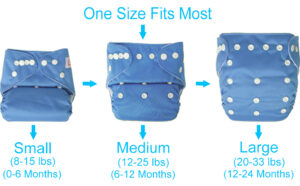All cloth diapering systems have two main components –an inner absorbent material to absorb the urine and stool, and an outer waterproof layer to prevent leaks. The absorbent component of the diaper is made of either natural fiber, which comes from plants such as cotton, hemp, or bamboo, or synthetic fiber such as microfiber. The outer waterproof portion of the diaper usually is made of laminated polyester fabrics. Some diapers have an additional “stay dry” layer of fleece, microsuede, or athletic wicking jersey on top of the absorbent component to keep moisture away from the baby’s skin. The way these components are combined gives rise to the variety of cloth diapers available in the market.
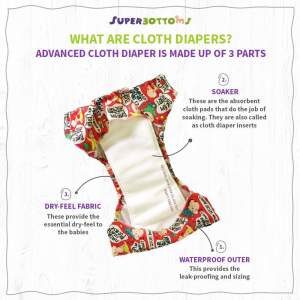
1. Flats
Flats are the “old-school” diapers that our previous generations are used to. They consist of large squares of a single-layered absorbent fabric, such as cotton, that can be folded in a variety of ways. They are very inexpensive and dry very quickly, but require folding and pinning either with a safety pin or a modernized version called a “snappi”. They must be used with a cover to be waterproof.
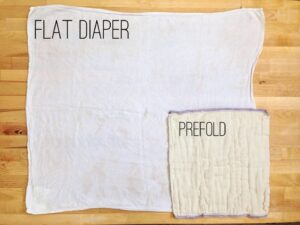
2. Prefolds
Prefold diapers are essentially flats that have been folded over to create a rectangular piece of cloth with three sections. The middle section has the most layers of cloth and so is the thicket and the most absorbent section, whereas the two side sections have fewer layers and are thinner. Although they still need to be folded before being used in a diaper, they are smaller in size and easier to fold. Like with flats, prefolds are cheap but need to fastened and used with a waterproof cover.
3. Fitteds
Fitted diapers are cloth diapers that are already shaped like a diaper with elastic bands around the legs and waist which do not need to be folded like with the previous two options. They are made of absorbent material only (like the flats and the prefolds) and hence need to be used with a cover. Some need to fastened, however, others come with snaps or Velcro/ aplix closures. Fitted cloth diapers are easier to use than pre-folds however, they are more expensive and take longer to dry after washing.
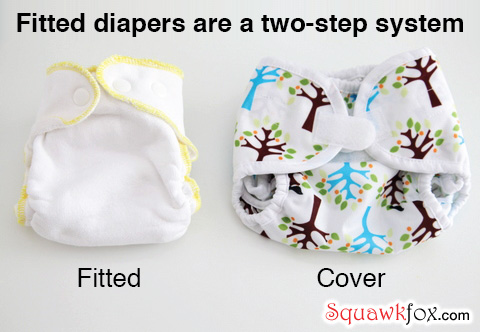
4. Diaper Covers
Flat, prefolds and fitted diapers are not waterproof on their own and need to be used with diaper covers to prevent the diaper from leaking. Covers are essentially a thin layer of waterproof material with either snaps or velcro closures in which you place the flat, prefold, or fitted diapers.
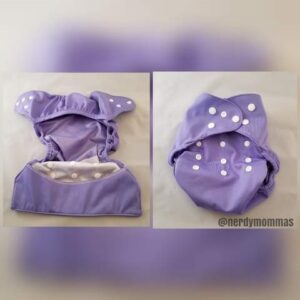
5. Pocket Diapers
Pocket diapers are one of the most popular types of cloth diapers. These diapers have a waterproof outer layer and a stay-dry inner layer made of wicking materials such as microfleece, microsuede, or athletic wicking jersey which are sewn together with an opening/ pocket in which to insert the absorbent material. The inserts are made of microfiber, cotton, bamboo, or hemp. The amazing part is that you can adjust the overall absorbency of the diaper by layering different inserts into the pocket.
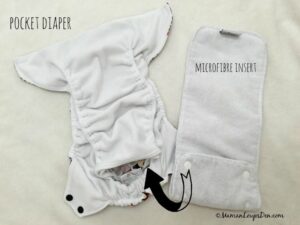
Once stuffed these diapers are easy to use, easy to clean, and quick to dry. These diapers range in price but are usually more expensive than previous options. The downsides are that the diapers need to be changed each time after being soiled, inserts need to be removed before washing and re-stuffed before use which can be time-consuming.
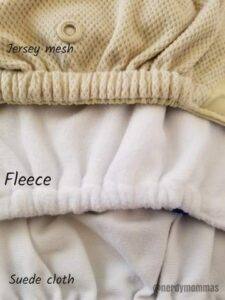
Note: Microfiber inserts are ok to use inside the pocket but should not be placed directly against your baby’s skin as they can cause irritation. (Learn more about the different types of inserts here)
6. Sleeve Diapers
Sleeve diapers are essentially pocket diapers with two openings – one on each end. The advantage here is that you do not need to unstuff the diaper if using a washing machine as the insert will come out on its own with the agitation produced by the washing machine.
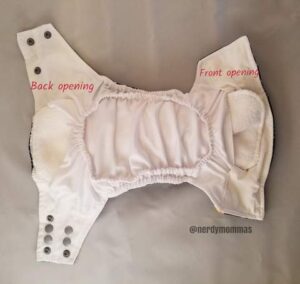
7. All-in-Twos
All-in-twos are similar to pocket diapers except that instead of stuffing a pocket, you snap the insert inside the diaper. This feature allows you to change the insert and re-use the shell for another diaper change without having to change the whole diaper.
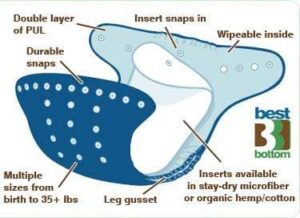
8. All-in-Ones
All-in-one diapers are the closest to disposable diapers as they are all one piece. They are basically all in twos there the inserts are sewn into the diaper cover. The benefit is that there are absolutely no other steps – just use and wash (No stuffing/ unstuffing/ folding, etc). These are usually pricier than the other types, are bulkier, can take longer to dry than other forms of cloth diapers, and do not allow customization of absorbency.
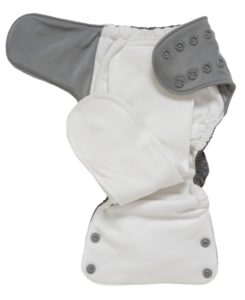
Sizes of cloth diapers
Cloth diapers are available as one-size diapers or sized diapers. One-size diapers have rows of rise snaps and waist snaps that make the diaper adjustable and can fit babies from newborn to two years of age. These are extremely economical and cost-effective. Sized diapers come in two to three different sizes. These are less bulky and fit better however as babies grow, larger sizes have to be bought to fit the baby.
